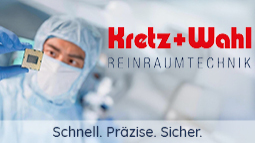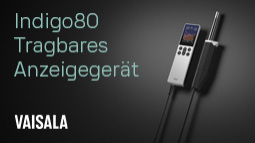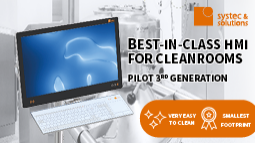Elizabeth Rivera
Basic Design Concepts for Clean-in-Place-able Equipment Used in GMP Regulated Industries
In today’s pharmaceutical, biopharmaceutical, cosmetics and medical device industries a variety of methods are used to clean process equipment. Cleaning methods vary from using manual wipes and brushes to employing sprayers, baths, washers and clean-in-place (CIP) systems, among others. These methods differ mainly in the mechanical action applied on the surfaces and the degree of personnel involvement.
Even though many of these validated cleaning methods are accepted by drug regulatory agencies around the globe, a significant number of companies are switching from their existing cleaning processes to CIP systems. There are three reasons for this conversion; CIP systems are effective, consistent and reliable.
CIP systems have been used in the food industry for decades. Their effectiveness was proven in this industrial application long before they were introduced to pharmaceutical companies [1, 2]. Consistent cleaning results are achieved because there is minimal operator intervention, reduced likelihood of human error, and consistent control of critical parameters. For these reasons and others, the use of CIP systems has become a standard practice, particularly for GMP regulated facilities.
The principal objective of a CIP system is to achieve the desired cleanliness without disassembling the process equipment. Generally, CIP cleaning is done by circulating cleaning solutions through pipes, pumps, valves, and spray devices that distribute the cleaner over the surface areas of the equipment. The cleaning process may include steps such as preparing cleaning solution to a pre-established concentration, heating the cleaning solution, circulating wash and rinse solutions through all equipment surfaces, and finally drying as needed.
Benefits and challenges of CIP cleaning
CIP systems are capable of controlling, monitoring, and documenting critical parameters used in automated cleaning processes. Typically, parameters such as time, action, detergent concentration, and temperature (TACT) determine the cleanliness achieved by a process. Controlling these parameters effectively results in consistent cleaning performance. In addition, the cycle documentation that is critical for process validation and product batch release is generated automatically in a CIP process.
Another benefit is that cleaning parameters can be easier to optimize when using a CIP system. A CIP process allows the user to set more aggressive TACT parameters than are possible with other cleaning methods that involve manual intervention. For example, alkaline or acidic chemistries can be used instead of the neutral products that are safer for manual applications. Higher concentrations and temperatures can also be applied to achieve more efficient cleaning.
In addition, CIP systems offer operator and process safety benefits. For example, cleaning processing equipment without dismantling it reduces operator exposure to potent drug residues and hazardous cleaners. Also, the risk of damaging process equipment is minimized since the assembly and disassembly of the equipment is subject to human error which, if it is not executed correctly, can lead to malfunction or serious damage to the equipment. Moreover, CIP systems may obviate the need for personnel to get inside the vessel to clean sharp parts likes agitator blades or hard-to-clean locations, which reduces the added risk of personal injury.
Although the disadvantages of CIP systems are minimal, some companies still have some resistance to adopting CIP technology. One of the most common reasons is the physical limitation of their process equipment. Not all manufacturing equipment can be completely cleaned in-place without engineering modifications; and even with modifications, some cleaning out-of-place may still be needed. Time and cost are also factors; CIP equipment must be qualified, which consumes time and resources. In addition, the required software and hardware may be complex and may need to be custom-designed for each process; there is no “one-size fits all” solution. Consequently, a CIP system requires an initial capital project investment for acquisition, installation, and qualification of the unit before running it in a GMP regulated environment [3].
If a facility chooses to invest in a CIP system, here are some design guidelines that will optimize its operation and cleaning effectiveness.
CIP AND CIP-able Equipment
A CIP system includes equipment and/or components that are used to perform cleaning in-place. These systems can be fully or semi-automated for minimal operator intervention. They can be fixed installations or portable systems used to clean multiple pieces of equipment in the same manufacturing train. Figure 1 is an example of a fixed CIP skid unit connected to manufacturing equipment. CIP systems can also be designed and integrated into the equipment itself. Figure 2 illustrates a large vessel with all the necessary components to perform cleaning without the use of a separate CIP unit. All cleaning steps, particularly cleaning solution preparation and heating, are performed in the same process vessel.
Materials of construction
Materials used for GMP equipment must be easy to clean, corrosion resistant, and nonreactive with either manufacturing or cleaning process conditions. Surfaces should have a smooth appearance and be fabricated appropriately with materials that are adequate for the process. Processing equipment is primarily made of 304 or 316-grade stainless steel and with glass, hastelloy or equally corrosion-resistant materials. Seals, gaskets and closures are made with plastic and elastomers that are suitable for the intended application.
For optimal cleaning, surfaces must be free of scratches, crevices, etching and any irregularities. Polished surfaces with roughness of Ra ≤ 1.6 µm have been established particularly for the biotechnology industry to facilitate cleaning [4]; nonetheless, recent studies suggest that surface cleanability is mostly affected by surface defects rather than surface roughness [5].
Piping and process connections
Welding is the preferred method for connecting piping used to handle product and transfer cleaning solutions. A properly welded connection should not have excessive cracks, crevices, misalignments, or other surface deformities that will later contribute to corrosion. In the case of non-permanent joints used for maintenance or multi-process reconfigurations, “sanitary” clamp-type connections are universally accepted for joining two similar end pieces with a centered elastomeric gasket. Variations of the clamp-type connection have also been developed for high pressure applications. Flanged and cam-type connections must be avoided because the sealing material may not align adequately and may eventually collect residues in the gasket area.
Diaphragm and pinch valves are most often recommended and are generally considered “sanitary” valves. Other types of valves (ball valves, gate valves and butterfly valves, for example) carry some contamination risk by accumulating soil and debris at gasket spindles and crevices, so they are difficult to clean in-place. Ball valves used in API manufacturing are commonly located at the bottom of large vessels because they can withstand high pressures. If a ball valve is installed, specific instructions should be included in the process cleaning procedure for dismantling and visually inspecting the ball valve once CIP cleaning is completed. Additional manual cleaning steps and sampling for cleanliness may also be necessary.
Dead legs, pitch and pumps
Dead legs are areas in a piping system where liquid or gases can become stagnant and where water is not exchanged during flushing. For obvious reasons, dead legs should be minimized or, if possible, avoided in CIP piping. Bacteria and soil in dead-end pipe lengths and crevices become “protected” from flushing and sanitization procedures and eventually can recontaminate the piping system. Dead-end in piping are unacceptable unless they can be physically inspected and sampled for cleanliness. Branches and/or tees used for instrumentation should be horizontally positioned and with their length limited to 1.5 times the pipe diameter. Figure 3 depicts an illustration of a dead leg and its recommended orientation.
Piping can be effectively cleaned by circulating the cleaning solution at flow rates that produce turbulent flow conditions. Usually, CIP flow rates will be much higher than the flows used for manufacturing processes. A parameter called Reynolds number (Re) is used to determine whether a flow will be laminar or turbulent. This dimensionless number describes the expected velocity profile for a fluid flowing under certain set parameters. For a fluid running in a circular piping, Re can be calculated as follows:
Re = DρV/µ
Where D is the pipe diameter, ρ is the fluid density, V is the fluid mean velocity, and µ is the fluid viscosity. Re numbers higher than 4000 will produce turbulence that creates random eddies, vortices, and other flow instabilities that can help exert some mechanical action on the pipe walls [6]. Random eddies are better than smooth constant fluid motion because they promote mixing and help prevent soil redeposition (Figure 4). Most CIP designers would recommend a fluid velocity of approximately 5 feet per second (1.5 meters per second) for water-based solutions in order to displace gasses, penetrate dead-legs and fill vertical downward piping.
Horizontal ductwork must be sloped at 1/16 to 1/8 inches per foot of piping (0.5 to 1 cm per meter of piping). The pitch must be towards drain points.
Pumps should be cleaned in line with the piping circuitry. When a pump is not required to operate in the CIP circuit the flow may be deviated through a by-pass. In general, the hygienic attributes of a pump are the materials of construction for its main pump chamber and sealing points. With a few exceptions, pumps typically include some sealing mechanism on the rotating shaft. Most hygienic pumps have seal mechanisms outside the product contact zone with minimal elastomeric exposure to product and cleaning solution.
Tanks, internal components and ancillary equipment
Pharmaceuticals can be processed in a variety of vessels with different shapes, sizes, and configurations. However, if they are to be cleaned in-place, processing tanks must have a conical dome and a bottom that facilitates draining. Flat bottoms, which are rarely used in pharmaceutical applications, need to have either bottom or side drain ports. When side drain ports are used they must be located below the end of the side wall and the tank should be sloped towards the drain. For good results, the vessel has to be able to drain liquid at the same rate that it takes in liquid. These same principles should also be followed for CIP skid tanks.
A vortex breaker is typically required for the bottom outlet nozzle of a vessel to prevent the swirling (vortexing) of flow. Disc and X-type breakers are most commonly used and both are easy to clean in place.
Nozzle design should follow the same sanitary guidance as discussed for piping. The length-to-diameter ratio should be kept within the 1.5 value and located preferably on top of the vessel. For example, pressure relief devices like rupture discs are easier to clean when mounted directly onto the nozzle rather than on an extension pipe. Tank insulation may affect nozzle design and may require a flare shaped nozzle. Side ports must be sloped towards the drain point.
Spray devices
Tanks can be effectively cleaned by distributing cleaning solutions using spray devices. A variety of these devices are available, including static devices like spray balls, spray tubes and spray bubbles; and dynamic devices that can rotate on multiple axes. Spray devices can cover large surface areas in vessels, charge chutes, vent lines and pipes larger than 8 inches (20 cm) in diameter. In vessels, static spray devices direct the solution to the top dome, from where it cascades down in a sheeting action. In comparison, dynamic spray devices operate at relatively high pressures and can rotate at different angles to produce surface impingement.
All CIP spray devices should contain drain ports that allow them to be self-cleanable. Periodic inspection is recommended to ensure that the spray holes are not clogged with particles and debris that can impact spray coverage and pressure.
The flow rate required for proper spray and cascading effect has been determined to be 2.5 gpm per foot of vessel perimeter in a vertical tank (31.1 L/min per meter of vessel perimeter) and 0.25 gpm per square foot of surface area in a horizontal tank 10.2 L/min per square meter of surface area). Baffles, dip tubes, nozzles or agitators in a tank add challenges to the cleaning process by preventing sprayed fluid from striking the far side of the vessel walls. When these mechanical items are present, additional spray devices may be necessary to reach protrusions and ‘shadowed’ areas.
Many types of agitators are available and are selected for specific application in the manufacturing process. Agitators with pitched blades can be cleaned utilizing the tank spray devices. Other types of agitators, like Rushton impellers used in biopharmaceutical processes, may require spray devices below the impeller to assure thorough cleaning. Other options for cleaning agitator blades may include immersing them in cleaning solution and adding mechanical agitation to facilitate soil removal.
The most effective way to clean vent lines, condensers, charge/discharge chutes, and any other type of ancillary equipment is by direct application of CIP solution from a spray device. Bubble sprayers connected to permanent or semi-permanent CIP pipes are used for spraying upwards and across to form falling films that sweep away soils.
Transfer panels play an important role in CIP systems. They are metal boards with an array of nozzles that can connect multiple pipelines. Transfer panels are used for supplying and changing the flow of cleaning fluids through different CIP pipelines linked to multiple process equipment within a piping circuitry. A transfer panel jumper, or u-bend, helps to break the flow between different fluids used in manufacturing without the risk of cross-contamination.
CIP Cycle Development and Validation for GMP Applications
Once a CIP system has been thoughtfully designed, it must be tested. Equipment qualification should be successfully executed before placing the CIP system into full operation. The installation Qualification (IQ), Operational Qualification (OQ), and Computer Qualification (CQ) provide a good basis for assurance that all the CIP components are installed and will operate as they were designed.
In addition to testing the mechanics of the system, it is important to determine the cycle phases and cleaning formulations that will be most effective. Pre-validation studies are helpful for establishing the cleaning chemistries and cycle parameters to be used in a CIP cycle. A standard CIP program can include:
1. A once-through flush-to-drain to remove bulk soil load
2. A recirculated alkaline wash
3. A short water rinse to remove alkaline cleaner
4. A recirculated acid rinse
5. A water rinse to remove acid cleaner
6. A high quality water rinse to drain
7. Drying by heat or nitrogen purge
Validation is the demonstration that a series of steps and parameters will consistently produce the expected results. An internally reviewed and approved protocol should be developed for this testing that includes objectives, methodology and acceptance criteria. Validation should follow the protocol, and all the data developed during its execution must be collected and attached to the final validation closure package. Many reference books and training materials are commercially available to assist with the development of cGMP cleaning protocols and procedures [7].
Take advantage of all CIP design resources
An effective CIP process design depends on the correct identification of system components and an understanding of how these components can help or hurt a successful cleaning configuration. Having these guidelines at hand can simplify the understanding of requirements for designing and implementing a reliable and effective clean-in-place process. It can be used by quality, technical and production personnel who wish to have some reference as to what to look for in a good CIP system.
However, it is important to note that CIP system designs are far more complex than the concepts discussed here, and they usually require the involvement of subject matter experts to assure that all necessary aspects of the process are addressed. The principles described here, even when supported by published references, cannot replace the advice and expertise of manufacturers and project design professionals who can provide direct, practical and cost-effective guidance during an on-site review. It is wise to take full advantage of the available expertise, which can save time, resources and aggravation in the long run.
References
1. Seiberling, D.A. Clean-In-Place for Biopharmaceutical Processes. Informa Healthcare USA, Inc. 2008.
2. Seiberling, D.A and J.M. Hyde. Pharmaceutical Process Design Criteria for Validatable CIP Cleaning. Cleaning Validation an Exclusive Publication by the Institute of Validation Technology. May 2005, pp 123-150.
3. PE 009-7. Guide to Good Manufacturing Practice for Medicinal Products (Part II). Pharmaceutical Inspection Convention/Pharmaceutical Inspection Co-operation Scheme (PIC/S). September 2007, pp 1-45,
4. EN 13311-1. Biotechnology – Performance Criteria for Vessels Part 1: General Performance Criteria. March 2001, pp 1-13.
5. Riedewald, F. Bacterial Adhesion to Surfaces: Influence of Surface Roughness. PDA journal of Pharmaceutical Science and Technology. 60 (3). May-June 2006, pp 164-171.
6. Perry, R.H., D.W, Green. Perry’s Chemical Engineers’ Handbook. McGraw-Hill. 8th ed. 2008, Section 6, pp1-56.
7. LeBlanc. D.A. Validated Cleaning Technologies for Pharmaceutical Manufacturing. CRC Press. 2000.
8. Cerulli, G.J., J.W. Franks. Making the Case for Clean in Place. Chemical Engineering. February 2002, pp 78-82.
9. Chisti Y., M. Moo-Young. Clean-in-place for industrial bioreactors: design, validation, and operation. Journal of Industrial Microbiology. 13. 1994, pp 201-207.
10. Fletcher N. How to avoid CIP Failure: Part 1. Cleanroom Technology. October/ November 2008, pp 18-20.
11. Fletcher N. How to avoid CIP Failure: Part 2. Cleanroom Technology. December 2008/ January 2009, pp21-23.
12. Verghese G., P. Lopolito. Cleaning Engineering and Equipment Design. Cleaning and Cleaning Validation Volume I, ed. P. Pluta, published by DHI Publishing and the Parenteral Drug Association. Chapter 8. 2009, pp 123-150.
About the Author
Elizabeth Rivera is a technical service specialist for STERIS Corporation, (Mentor, Ohio). Reach her at erivera@steris.com.
STERIS Deutschland GmbH
50933 Köln
Germany
















